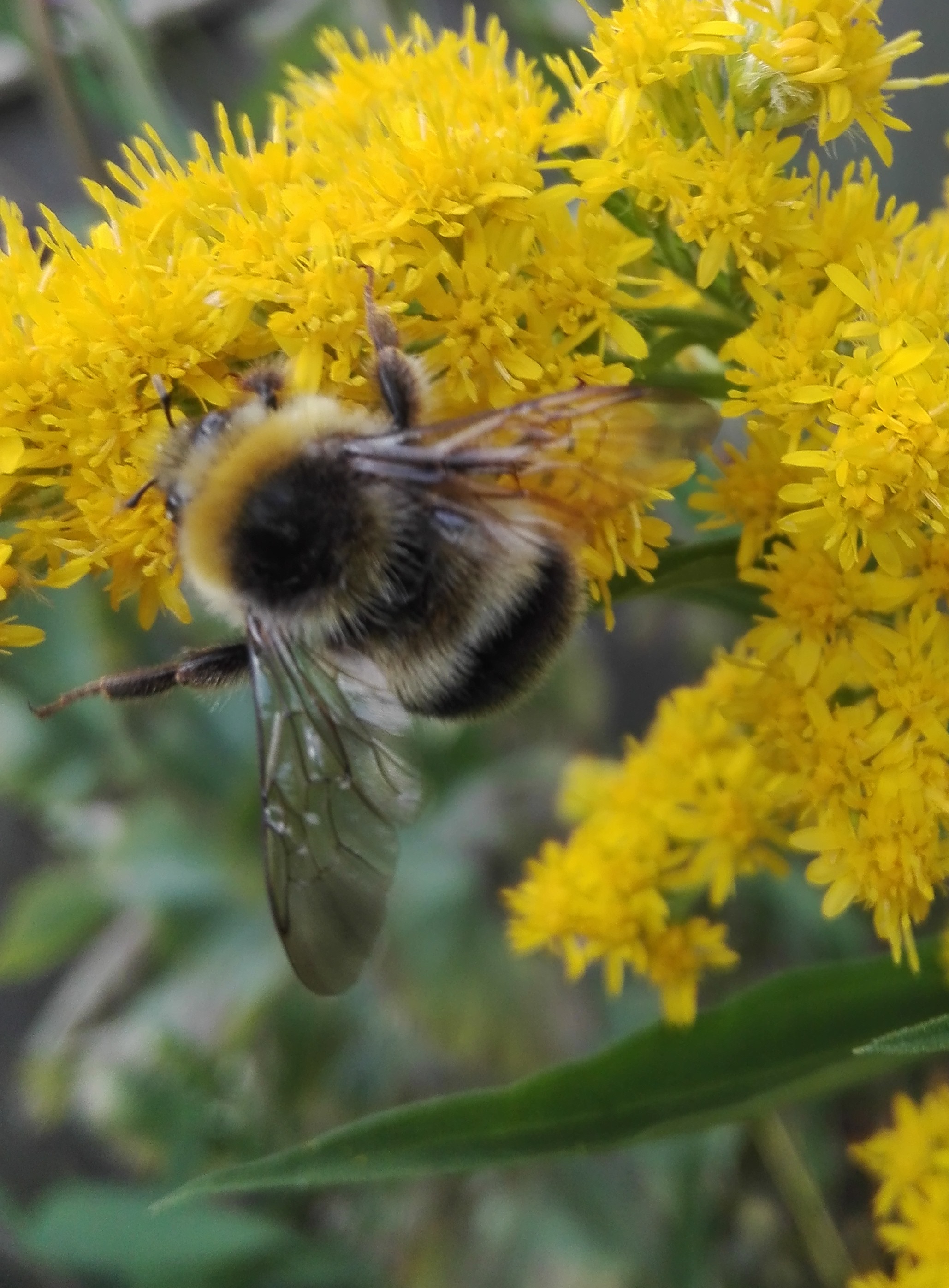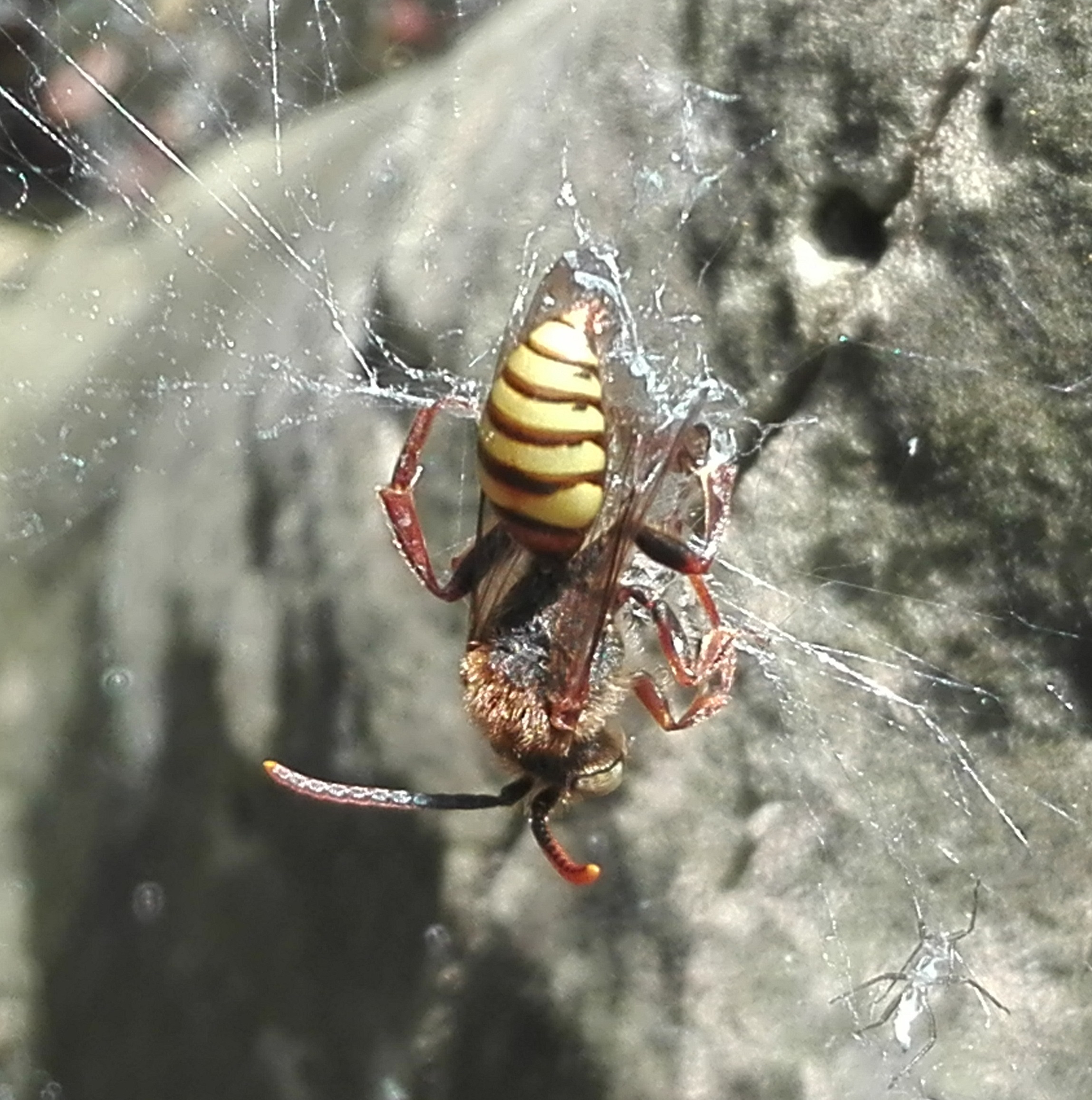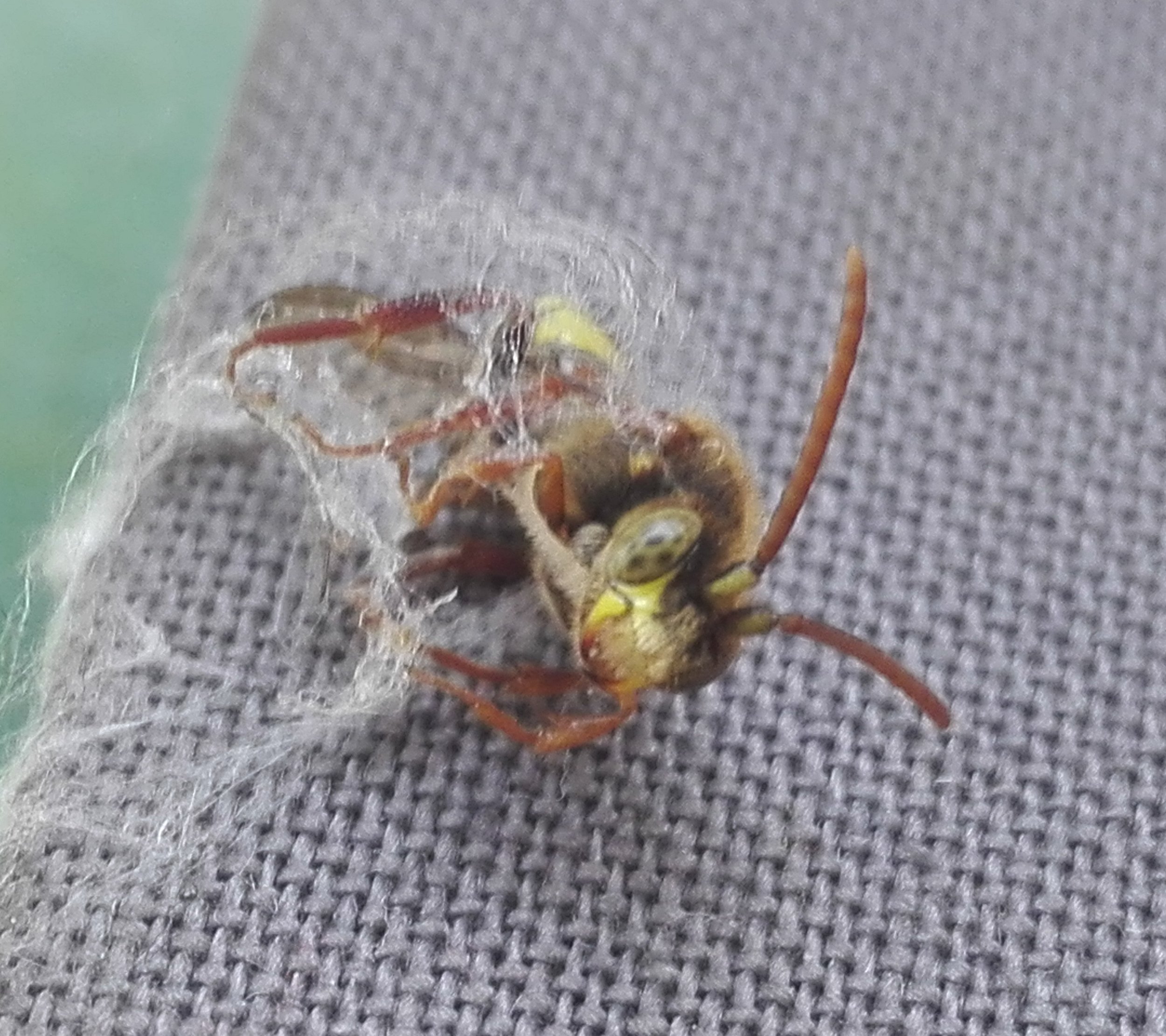The common wasps are back whenever we sit outside for a meal; but these two wasps are not the kind to bother you when you are eating.
The one on the left is a parasitoid wasp, rejoicing in the name Gasteruption jaculator. With its amazing long, white-tipped ovipositor it lays eggs into the nests of solitary bees, where its larvae will eat the bee larvae. According to the NBN atlas there’s not many records in Gloucestershire, so happy to snap it on my Goldenrod.
There’s a nice article here talking about the lifecycle (and name) of this pretty bizarre looking wasp https://www.gwct.org.uk/wildlife/species-of-the-month/2017/gasteruption-jaculator/.
The other wasp was fished out of the swimming pool, and with its smart black and yellow colour it looks like a potter wasp. These make their nests in hollow stems of plants like brambles, perhaps they might use a bee hotel as well. They hunt larvae from beetles and other insects, which they bring back to the nest for their own larvae. Species-wise I wondered about Gymnomerus laevipes (Box-header Potter Bee), but there are lots of similar-looking species, none of which seem especially well recorded and it’s hard to tell from the photos.








